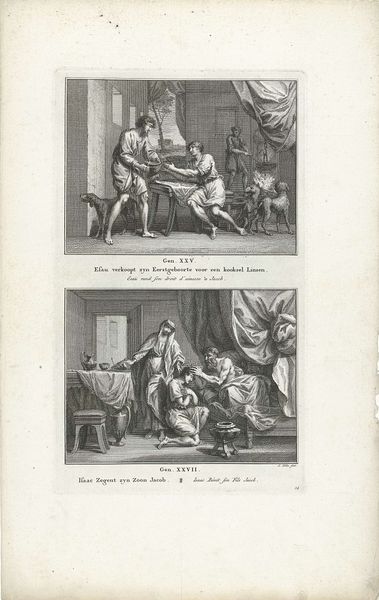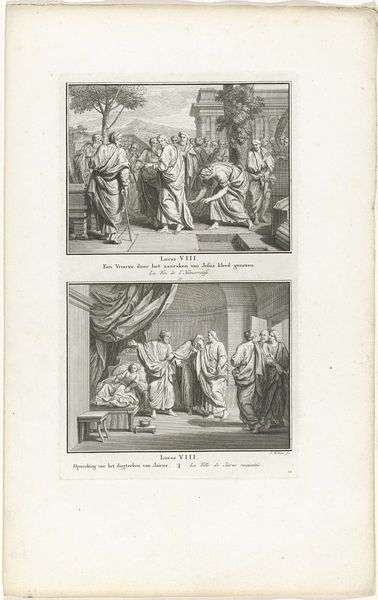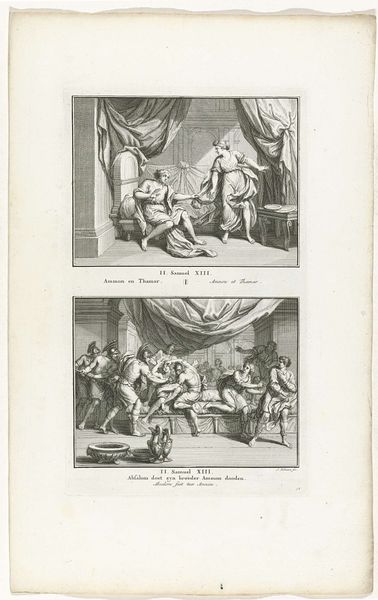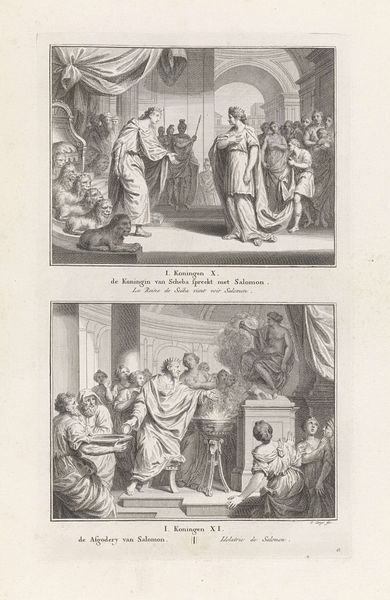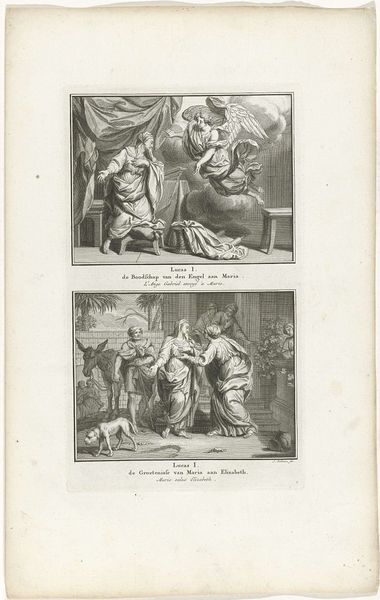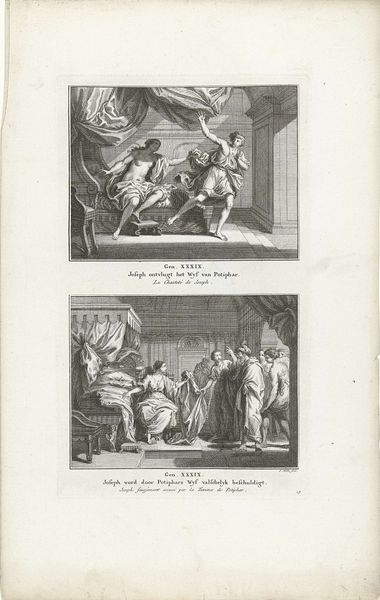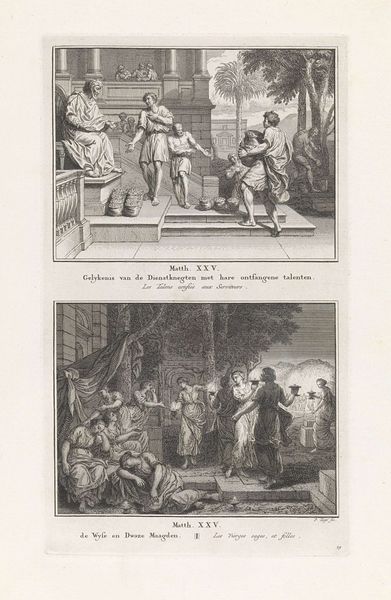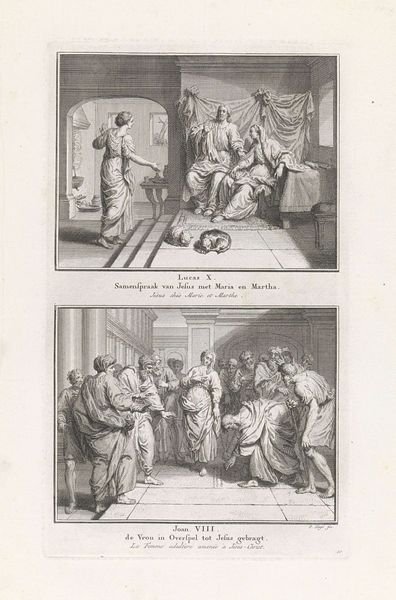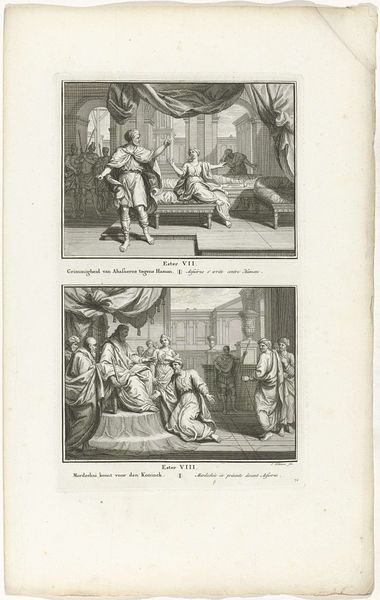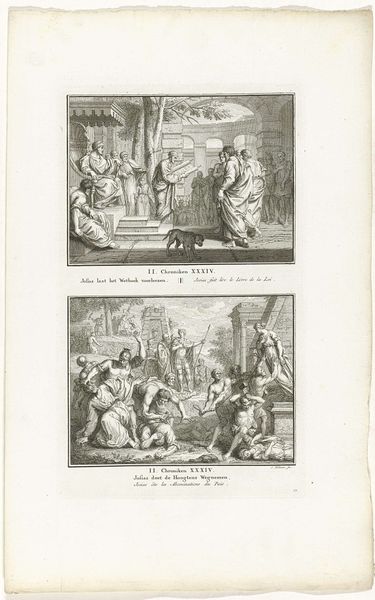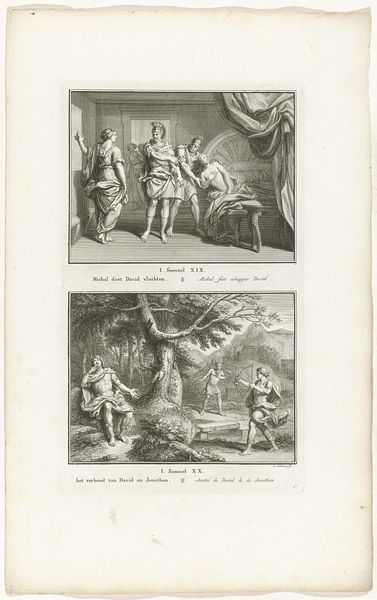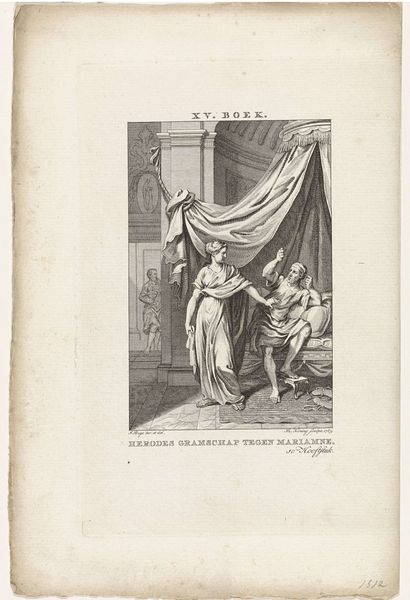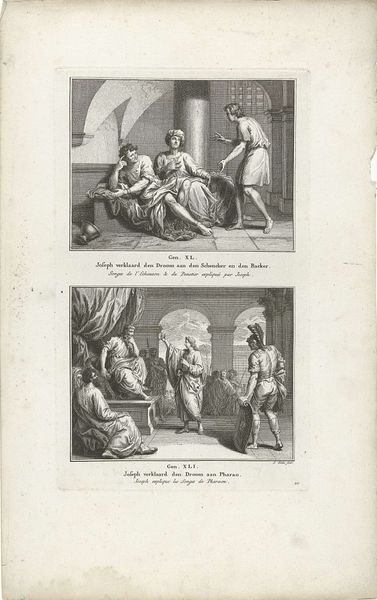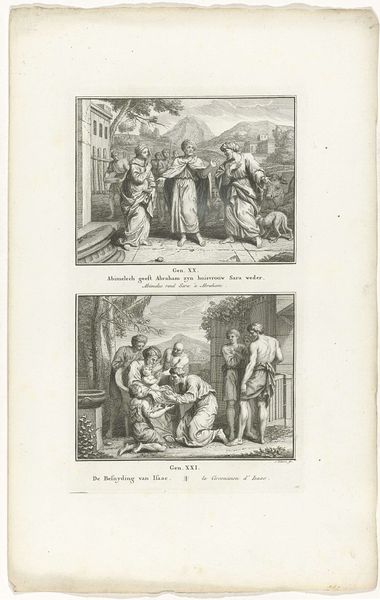
Dimensions: height 325 mm, width 194 mm
Copyright: Rijks Museum: Open Domain
Curator: This engraving from 1791 by Jacob Folkema, titled “Bathsheba Bathing and the Prophet Nathan with David,” really showcases the intricacies of printmaking. What do you think? Editor: Hmm. It strikes me as a kind of stark tableau, doesn't it? So many lines, but a little lacking in feeling, perhaps? Like a history lesson rendered in monochrome. Curator: It's interesting you say that. Engravings, especially at this time, involved intense labor. Folkema would have meticulously cut those lines into a metal plate. Each one is deliberate, serving the story's accessibility to a wider, literate audience. The image gets reproduced and spread, impacting social and political awareness, even morality plays, maybe. Editor: True, but isn’t it also about control? Every line etched with a tool, a removal, an act almost surgical in its precision... does that act in turn, restrict something in the interpretation? I wonder if the stiffness comes from that. It presents these biblical scenes—Bathsheba’s vulnerability, David’s confrontation—yet distances us, don’t you feel? I mean look at poor Bathsheba in the upper frame! Curator: Ah, but the controlled line is the message! Think about the context: printmaking allowed these scenes to enter households, teaching scripture visually and reinforcing societal norms. And the contrast isn’t arbitrary: there’s her exposed body in that initial scene, contrasted against David, then the authority, then the accusing finger of Nathan, each contributing to the didactic narrative. The materiality reflects its purpose, don’t you see? Editor: I see the *purpose,* yes, but does it achieve emotional depth? Does it transcend mere instruction? To me, it hints at the tension, that awkward feeling you have when confronted by your own transgression... almost. Still, I guess this print is about distribution and reach above artistic license? Curator: Precisely! And think about the paper it’s printed on, too – where did that pulp come from? What kind of labor produced *that* material? The complete process informs the message. Editor: Good point! Curator: Seeing it that way gives it depth that is beyond a simple snapshot. Editor: You are correct; I will carry these perspectives into further viewings!
Comments
No comments
Be the first to comment and join the conversation on the ultimate creative platform.
